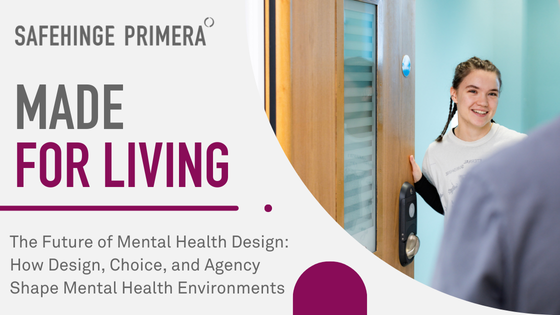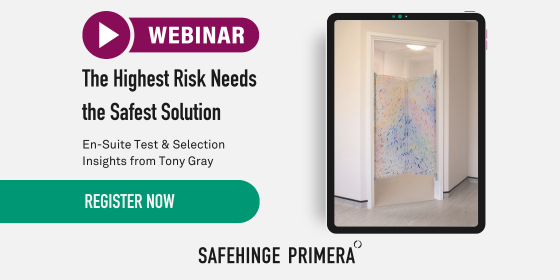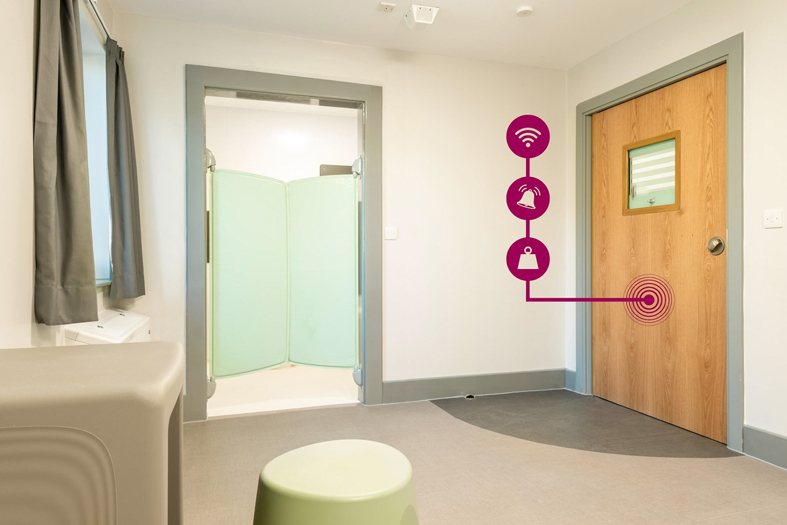Imagine a patient stepping into a mental health bathroom and instantly feeling reassured and safe, surrounded by items they can identify and know how to use instead of facing a stripped-out clinical environment. This is the ambition of every person involved in the design of mental health facilities.
In practice, this dream can often feel very far away, with mental health bathrooms often remaining clinical and impersonal.
Research indicates that mental healthcare designers should prioritise balancing necessary safety measures with the creation of comfortable, non-clinical environments (Shepley et al., 2016). Load release bathroom fittings are among the variety of products that can help create a more homely environment, reducing the clinical feel while maintaining essential safety and ligature protection. This article will explore how a balanced approach can contribute to better therapeutic outcomes without compromising safety.

Creating Safer and More Comfortable Environments
Balancing Safety with Comfort
In mental health facilities, ensuring the safety of patients is paramount. However, the clinical feel of many environments, particularly bathrooms, can exacerbate feelings of distress and discomfort, hindering the impact of the support they are receiving. The introduction of load release fixtures plays a role in bridging this gap, through introducing familiar items that would be used daily within patients' homes. These fixtures, designed to minimise ligature risks, help create a safer environment while also increasing the usability of the space. In the right settings, they provide the necessary levels of safety while allowing spaces to feel more personal and less institutional.
Importance of Privacy and Dignity
Privacy and dignity are crucial elements in mental health care. Shepley et al. (2019) emphasise the need for environments that support these values, particularly in spaces like bathrooms. It is easy for patients to feel overwhelmed, and having a space where they can relax in as much privacy as possible goes a long way to address this. Everyday activities such as having a hot relaxing shower can make a significant difference, but only if privacy and dignity are preserved. Concerns of being naked in front of people, or not feeling secure in the space remove the therapeutic benefits that these activities can bring.
Load release fixtures, such as shower and curtain tracks, offer a solution that ensures safety while maintaining user privacy. They're designed for everyday use, but if a moment of crisis hits, the fixtures detach under pressure, preventing harm while still offering the privacy patients deserve in their vulnerable moments. It's a small detail, but it can make a big difference in feeling safe and respected during a difficult time.
Empathy in Design
Understanding Patient Needs with Deep Empathy
Designing environments for mental health care demands a thorough comprehension of patient needs and a solid grasp of the associated risk levels.
To truly understand the challenges faced in mental health environments, our team members recently slept in one themselves. This commitment to empathy allows us to develop solutions that prioritise well-being. This experience offered mission critical insights into the daily challenges and safety concerns faced by patients. It deepened our empathy and effectiveness in design while emphasising the significant impact improving the ‘homeliness’ of the environment has on patient well-being and feeling safe.
Fixtures were one area the team focused on during their stay; realising how obvious the missing everyday items they took for granted were. Not being able to hang up their jackets, have their cleaning essentials right next to them in the shower, or even be able to pull the curtains closed at the end of a long day, highlighted the essential role these fittings play in everyday activities. Wardrobe rails and coat hooks that release under excessive load help prevent self-harm and reduce accidental damage, creating a safer environment for both patients and staff while still allowing patients to perform everyday tasks. This design approach reflects a commitment to empathy, recognising the importance of creating spaces that feel safe and supportive. This approach should run throughout the design of all mental health spaces, balancing this empathetic approach against the significant consideration of the need to have robust safeguards to protect patients in times of crisis.
A Holistic Approach to Safety
Load release fixtures extend beyond basic safety measures. They incorporate materials and designs that prevent shattering and reduce the risk of self-harm or injury. This comprehensive approach to safety is crucial in high-stress environments, ensuring that every aspect of the space contributes to the well-being of its users. By prioritising both safety and usability, these fixtures help create a more therapeutic environment in the right settings.
Conclusion
Load release fixtures are important in designing safe and supportive mental health environments. By incorporating these products, facilities can enhance physical safety while promoting dignity, privacy, and a sense of normalcy for patients. Through informed, empathetic, and innovative design, we can create environments that support healing, challenge stigmas, and foster positive change. Together, through collaboration and advocacy, we can improve the quality of mental health care, ensuring safer, more compassionate spaces for all.
Contact us to learn more about how our solutions contribute to safer Behavioral Health environments.




